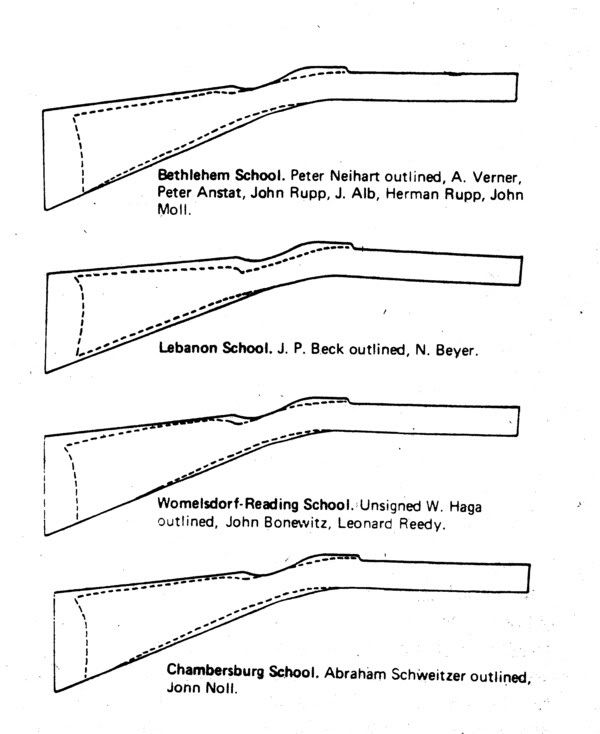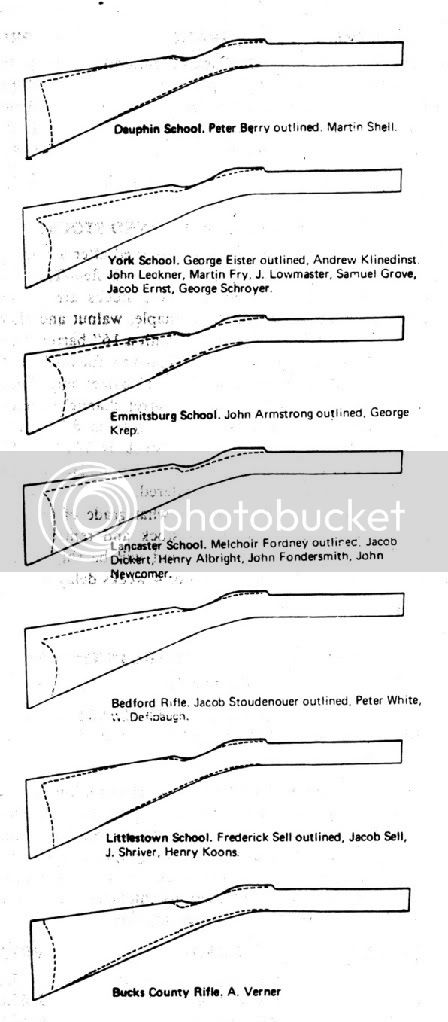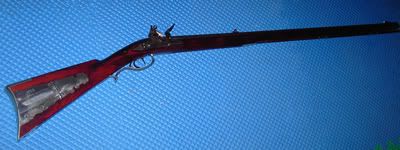tg said:"Don't recall you posting that pic before..."
I have but it was several years ago, I sold it to fund my smoothbore passion.
Damn Smoothie's.... :grin:
Steve

tg said:"Don't recall you posting that pic before..."
I have but it was several years ago, I sold it to fund my smoothbore passion.


hanshi said:The rubber cement alluded to was meant as a way of insuring the FITTED nosecap wouldn't come off in thick brush. Cheezy? What about folks who put in shims, switch sights, shorten lock bolts, cone/crown barrels, etc., etc. even on expensive custom guns. That doesn't mean they, too, were built by careless, cut corner builders.
I've never had a fitted nosecap come off accidentally; they are fitted snugly yet can be removed without a lot of work. In fact this is the first time I've ever heard of anyone expressing reservations concerning this method of attachment, and even that was partly hypothetical. It's basically a "tire kicking" situation, nothing more.
Now for those who like to nitpick, see the gun in the flesh THEN make judgement (and keep it to yourself), please! You don't go into a man's or a woman's home and start pointing out things you dislike or would do differently. So don't look at a PICTURE of an owners flinter (an attractive one to boot) and tell him it's trash, not built well, needs this or that. It belongs to him and is obviously what he wants. When you build yours you can show a photo (as Tg did) and point out things you'd do differently, now. Anybody ever heard the word "SHAME"?

fitter said:Dan, I'm a little over 10mins from MCRD.
Dan Phariss said:Early JP Beck is an early Lancaster (Lebanon was part of Lancaster IIRC). The books are in MT I am at MCRD San Diego right now.
Fordney is very very late. He was killed in 1846.
His stock design is classic Lancaster though if you are looking for the "classic" Landcaster but its not Rev-war either.
Dan
excess650 said:Dan Phariss said:Early JP Beck is an early Lancaster (Lebanon was part of Lancaster IIRC). The books are in MT I am at MCRD San Diego right now.
Fordney is very very late. He was killed in 1846.
His stock design is classic Lancaster though if you are looking for the "classic" Landcaster but its not Rev-war either.
Dan
J P Beck wouldn't have been a gunsmith until the late 1760s (born 1751).
Melchior Fordney was taxed as a gunsmith starting in 1807, so still in the "Golden Age".
Caleb, Robert, and John Baker were most likely the earliest Lancaster gunsmiths, beginning around 1717(Lancaster County was formed from Chester County in 1729).
Jacob Dickert's family moved to Lancaster in 1756, by which time he was likely an apprentice.
Isaac and Philip LeFevre, Philip Feree, and Christopher Breidenhart were either working as gunsmiths, or already deceased by the mid 1750s.
Others like Graeff, DeHuff, Roesser, etc show up as gunsmiths in the late 1760s to early 1770s.
I guess its a matter of perspective as to what is early and late.
fort fireman said:I would be tickled to death if I could build a gun that looked that good. Even with all those "PROBLEMS" :grin:
You too TG. Very good looking rifle. :thumbsup: To bad you sold it to someone other than me. :grin:
Enter your email address to join: